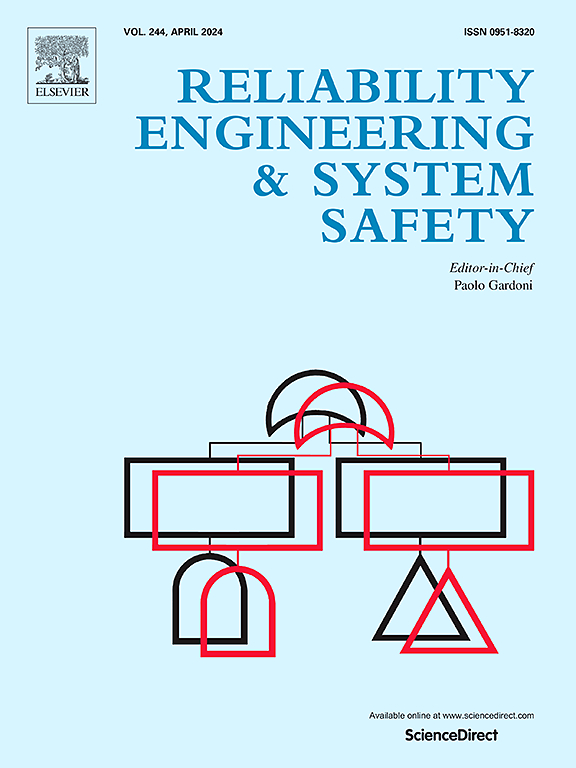Uncertainty quantification in predicting seismic response of high-speed railway simply-supported bridge system based on bootstrap
IF 9.4
1区 工程技术
Q1 ENGINEERING, INDUSTRIAL
引用次数: 0
Abstract
Reliable and rapid prediction of seismic-induced response is crucial for post-earthquake repair or rescue operations. In this paper, a method for quantifying uncertainty in rapid seismic response prediction for high-speed railway simply-supported bridge system (HRSBS) was developed based on a Bi-LSTM neural network surrogate model and Bootstrap resampling to address the challenge of acquiring timely seismic responses for HRSBS and the inability to determine confidence intervals from a single prediction result. Epistemic and aleatory uncertainties were quantified in rapid prediction of seismic-induced responses for HRSBS. The applicability of Bi-LSTM model based on a single seismic time series for predicting seismic-induced responses of HRSBS was identified. The results indicated that the prediction intervals with the 95% confidence level obtained by the proposed method encompass the actual values. The misjudgment rates of component damage states are effectively reduced. The Bi-LSTM model employing a single seismic time series input is suitable for predicting the time-history curves of seismic responses of components but not suitable for predicting seismic-induced residual displacement of rail.
求助全文
约1分钟内获得全文
求助全文
来源期刊

Reliability Engineering & System Safety
管理科学-工程:工业
CiteScore
15.20
自引率
39.50%
发文量
621
审稿时长
67 days
期刊介绍:
Elsevier publishes Reliability Engineering & System Safety in association with the European Safety and Reliability Association and the Safety Engineering and Risk Analysis Division. The international journal is devoted to developing and applying methods to enhance the safety and reliability of complex technological systems, like nuclear power plants, chemical plants, hazardous waste facilities, space systems, offshore and maritime systems, transportation systems, constructed infrastructure, and manufacturing plants. The journal normally publishes only articles that involve the analysis of substantive problems related to the reliability of complex systems or present techniques and/or theoretical results that have a discernable relationship to the solution of such problems. An important aim is to balance academic material and practical applications.
 求助内容:
求助内容: 应助结果提醒方式:
应助结果提醒方式:


